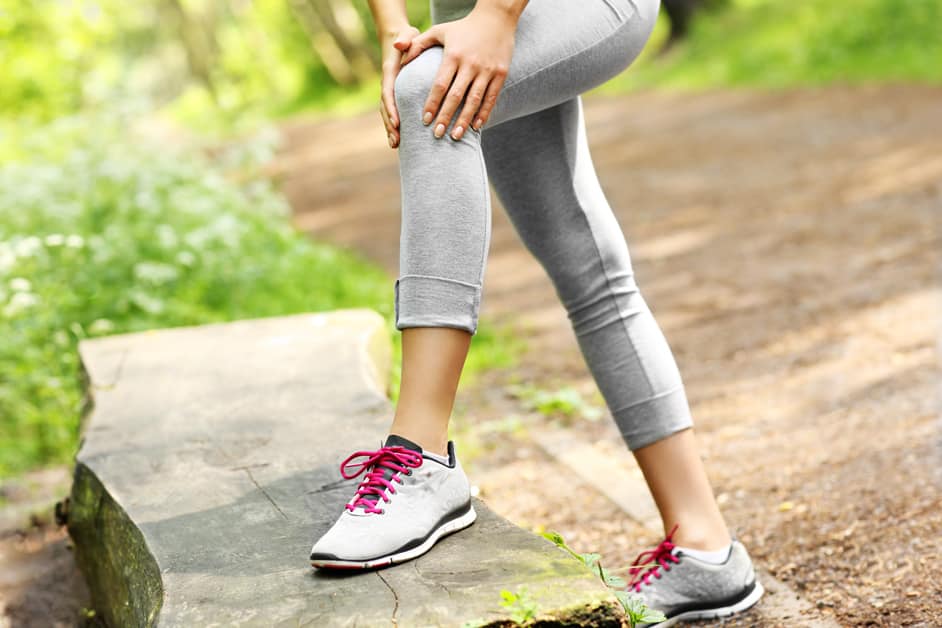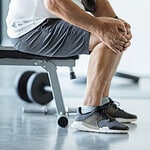Introduction
Exercising with flat feet can be quite a challenge. Also known as pes planus or fallen arches, flat feet is when the arch of the foot flattens out when standing. It can trigger pain in the heel, ankle, and toes. But, not to worry! With proper attention and the recommended methods, individuals with flat feet can exercise without injury.
In this guide, you’ll find preventive measures for reducing knee pain caused by flat feet during exercise. Read on for tips on avoiding knee soreness and discomfort associated with this condition!
Understanding Flat Feet
Flat feet, also known as pes planus, is a condition where the arch of the foot collapses. People with this usually feel pain and discomfort when being active. This is because their feet are not properly supported, leading to extra pressure and stress on the feet and nearby muscles.
Knowing about flat feet can help you figure out the correct exercises and changes to those exercises. This helps stop knee pain and stay safe while exercising.
Causes of Flat Feet
Flat feet can be caused by many things, including genetics, age and injuries. Children often have flat feet because the arch isn’t fully developed yet, but sometimes the arch never develops and the flat feet become permanent. Arthritis inflammation and postural issues can also cause flat feet.
People with flat feet should take extra caution when exercising. Without an arch to absorb shock, it increases the risk of knee pain due to strain on other parts of the lower limb chain. Flat feet also increase the risk of overpronation, which means the foot rolls inward more than normal, and places stress on the knee joints.
Fortunately, there are measures you can take to manage pain and discomfort while exercising:
- Wear supportive shoes designed for flat feet.
- Do exercises that target the muscles associated with arches.
- Use orthotics like splints or heel cups.
- Use padding in the ball or heel areas of your shoe.
- Have orthopedic braces made by professionals to wrap around the lower limbs.
These are all helpful preventative measures for people with flat feet to avoid further knee pain during exercise.
Symptoms of Flat Feet
Flat feet, also known as pes planus or fallen arches, is a condition. It causes the arch of your foot to collapse. This makes all of your foot touch the ground.
The symptoms of flat feet vary. They include:
- Pain in your feet, ankles, or legs
- Tiredness in your feet and legs, especially after standing or walking
- Less mobility
- Difficulty wearing normal size shoes
- Other foot problems like bunions or heel spurs.
If left untreated, it can cause back and joint pain. This can affect your day to day activities.
Physical therapy and exercises can help. These strengthen the tendons and reduce pain. Doctors may also prescribe orthotics. These have deep heel cups and arch supports. They support your joints and help you feel comfortable and stable during exercise.
Prevention Strategies
People with flat feet need to take action to avoid knee pain while exercising. Shoes designed for flat feet can be helpful. Also, strengthening workouts can help stabilize the ankle and knee joints.
We’ll discuss different tactics for people with flat feet to prevent knee pain while exercising:
Wearing the Right Shoes
To keep the knees safe during exercise, wearing the right shoes is key. This is especially important for those with flat feet, where the arch has collapsed and the feet are in contact with the ground. Excess stress on the knees can be caused as a result.
When selecting running or walking shoes, stiff soles made of rubber are best to provide support and stability. Soft shoes are not ideal as they do not provide much support and allow more movement. Cushioning in a shoe can help ease the strain on the knees, and provide comfort.
Different shoes should be tested out on different surfaces. Take note of terrain and track conditions when selecting the right shoes. This can help you find the maximum comfort during exercise, while avoiding putting strain on your knees.
Strengthening the Muscles in the Feet and Legs
Calf raises are a great way to strengthen the muscles in your feet and legs and reduce stress on tendons and ligaments in the heel area. To do this, stand with your feet hip-width apart and toes pointing ahead. Rise up onto your toes as high as you can and slowly lower back down. Repeat 10-15 times for two sets.
Toe curls can also help strengthen the muscles in your toes. Hold onto both ends of a resistance band (or weights) with both feet on the ground. Point your toes away from each other, curl them inward and then slowly return them back outwards. Do this 10-15 times for two sets.
Stretching exercises can improve flexibility and really maximize prevention potentials. Try the dorsiflexion stretcher, ankle circles and plantar fascia stretch. All these techniques can help target areas such as ankles or arches that may be more prone to damage.
Stretching Exercises
Stretching is key for any exercise plan, especially if you have flat feet. Flat feet can cause extra knee pain and lack of body awareness.
Stretching exercises can help lengthen and strengthen the muscles that support the foot and ankle. It is important to get the form right – otherwise it can do more harm than good.
Before starting stretches, warm up your muscles by walking or jogging. Then begin with your stretching program. Examples of great stretches are:
- Calf stretch: Stand facing a wall in lunge stance. Keep hips forward and press heel into the floor. Hold for 15–20 seconds, then switch sides.
- Standing IT Band Stretch: Cross one leg over the other, resting on chair or bench behind you. Lean slightly to the side for 10-15 seconds before switching sides.
- Hip Flexor stretch: Kneel down on one knee with the other leg bent out in front at 90° angle. Push hip forward until a slight stretch is felt in the inner thigh. No pain should be felt. Hold 20–30 seconds, then repeat on other side.
- Achilles Tendon Stretch: Stand facing away from the wall, feet hip width apart. Bend one knee forward and press heel of second foot into floor. Feel tension in Achilles tendon but no pain. Repeat on opposite side.
- Hamstring Stretch: Lie down on your back. Bring one leg up onto chair or bench, keeping other flat on floor. Push head and shoulder up, deepening stretch. Hold for 10–15 seconds, then switch sides.
Stretching helps maintain joint health and prevents injury during exercise. Include it in your fitness routine if you often feel knee pain when exercising.
Orthotic Inserts
Orthotic insoles, also known as orthotics, are inserts you can put in shoes to help your biomechanical foot structure. They help with misalignments, absorb the shock of hard surfaces, and reduce strain on your feet. They can even help with flat feet or high arches due to ill-fitting shoes.
There are many kinds, sizes, and materials of orthotic insoles. Some focus on comfort, while others focus on support and cushioning. When picking one, think about:
- what type of shoe you’re wearing
- the activity level or sport
- any foot impairments you have
- your gait
If needed, ask a podiatrist for advice on the best one and how to wear it.
Conclusion
Exercise is great for knee pain management. But, watch out for the intensity and length of your workouts to stop symptoms from getting worse. Those with flat feet need to be extra careful when exercising. Get shoes with good arch support and pay attention to your strength and flexibility. Do exercises that target your affected muscles. Take regular breaks between workouts for your knees to rest and recover.
By doing this, you can lead an active life and protect your knees from injury and discomfort.
Frequently Asked Questions
Q: What are some exercises to reduce knee pain for people with flat feet?
A: Strengthening exercises for the calves, hamstrings, and glutes can help reduce knee pain for people with flat feet. Exercises like squats, lunges, step-ups, and calf raises can help improve knee stability and reduce the risk of injury.
Q: Are there any special shoes I can use to help reduce knee pain while exercising?
A: Yes, shoes with extra arch support can help reduce knee pain for people with flat feet. Look for shoes that have a cushioned insole and extra arch support to help reduce the strain on your knees.
Q: What tips should I follow to help reduce knee pain during exercise?
A: To help reduce knee pain during exercise, always warm up and stretch before exercising. Additionally, be sure to keep your feet and ankles strong and flexible with regular stretching and strengthening exercises.





